CAUSAL ANALYSIS
CAUSAL ANALYSIS
Robert W. Gehl is an assistant professor of New Media at the University of Utah, where he teaches critical studies of communication design and technology. His research centers on issues of technology and culture, and he is the author of Reverse Engineering Social Media (2014). In this essay, Gehl offers a genealogy and a critique of “liking” online.
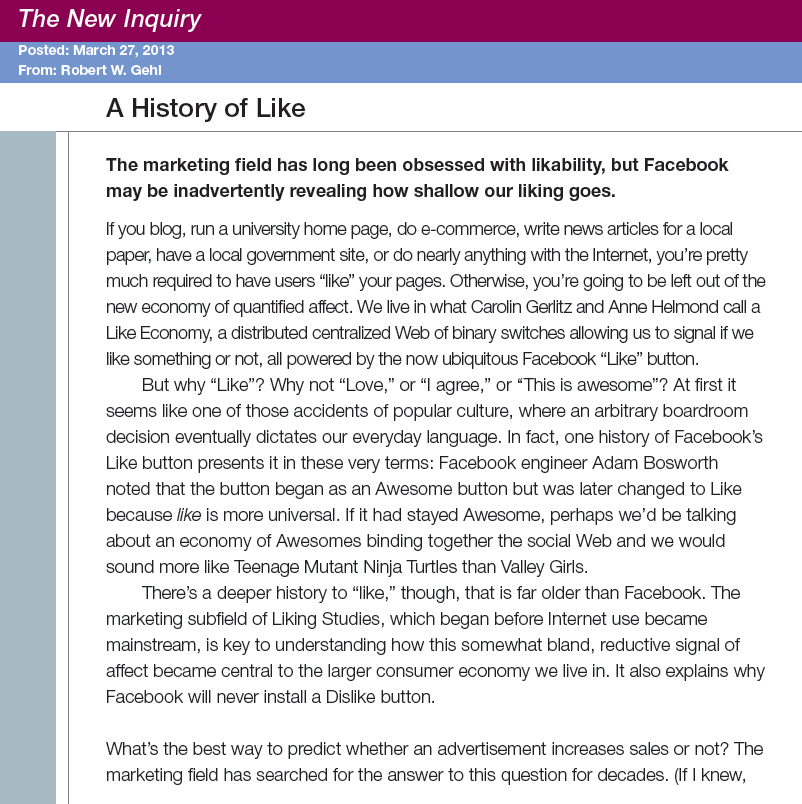
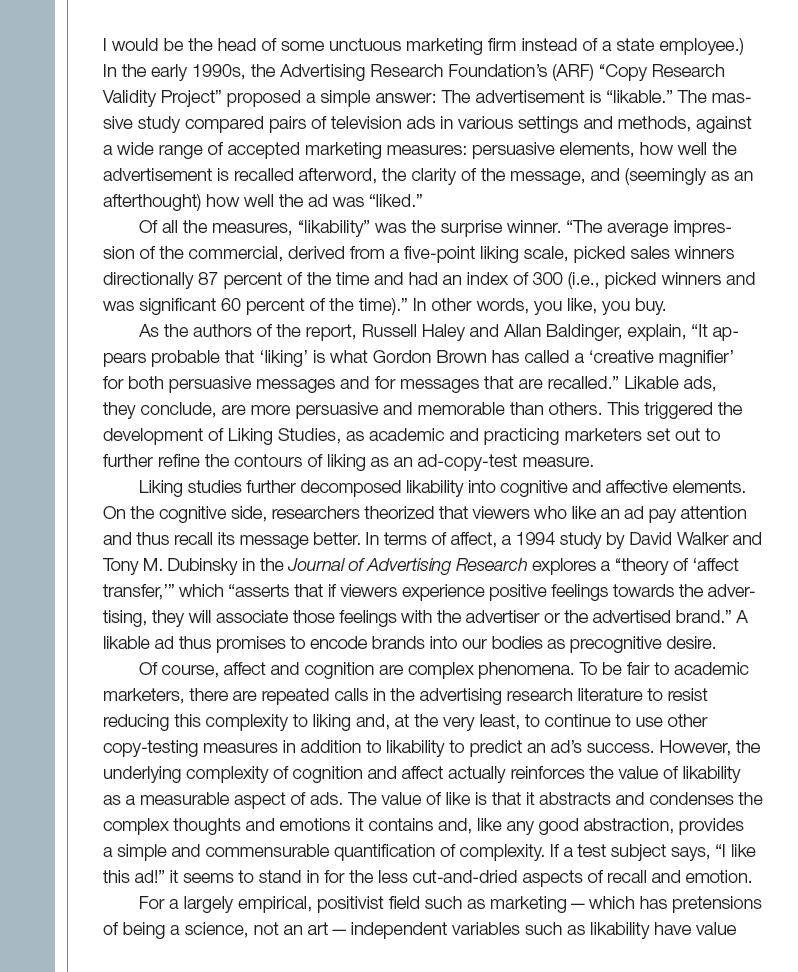
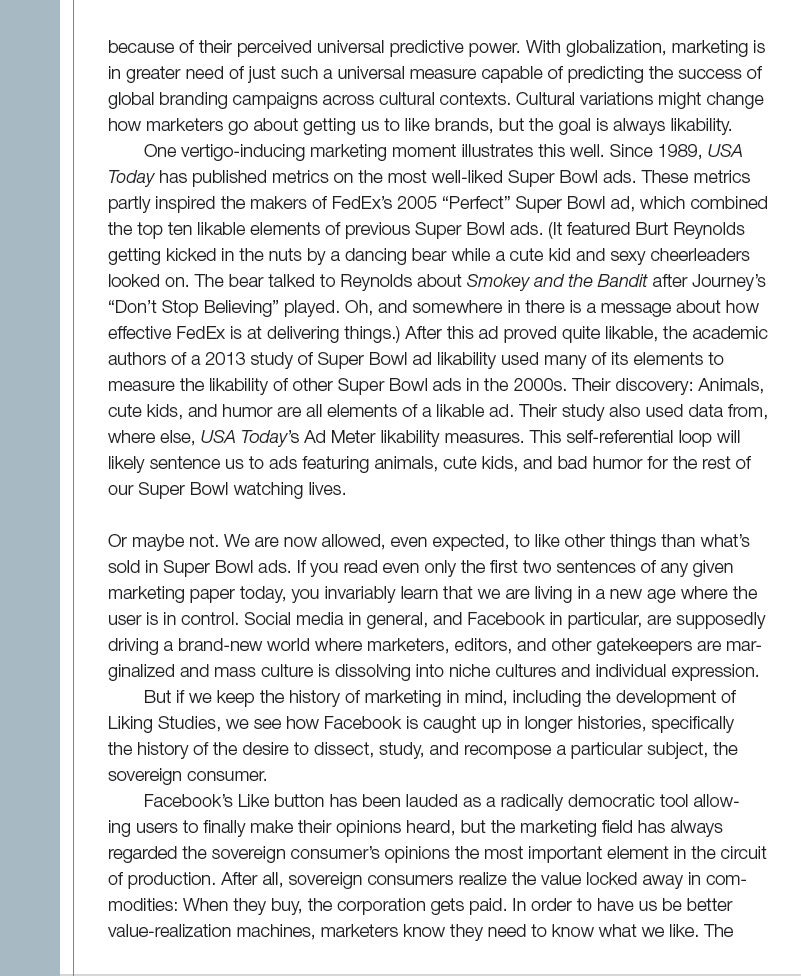
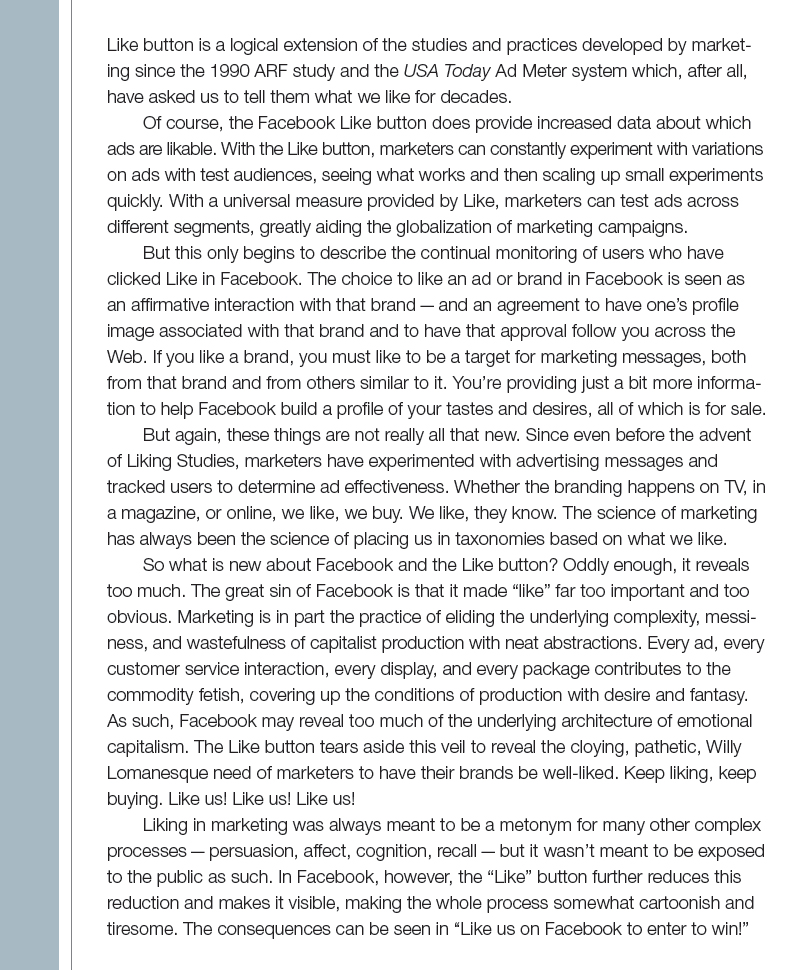
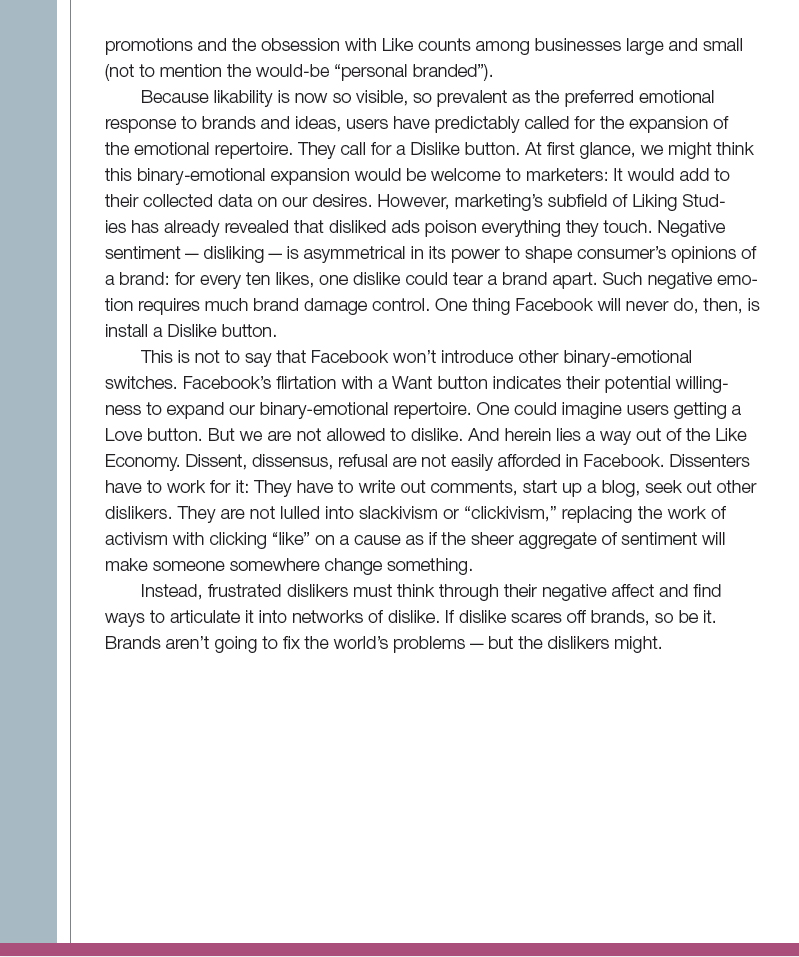
Reading the Genre
Question
1. This causal analysis examines the way that marketing has shaped the landscape of media, including social media. As a class, explore the ways that marketing has become a science, and discuss what this will mean for the future of commercials. How will marketing also change our communication on social media?
Question
2. Whenever you are writing a causal analysis, it is important to consider a wide range of possible causes and causal relationships. What other factors do you think might have led to our current “like” economy and “like” culture? (See “Appreciate your limits”.)
Question
3. Investigate Gerlitz and Helmond’s “Like Economy,” which Gehl discusses at the opening of his essay, and the connected concepts of the “hit economy” and the “link economy.” What do you think might come next in this progression?
Question
4. WRITING: Gehl’s essay examines the history of the “like” button, analyzing how it has both reflected and shaped our attitudes toward culture, especially our consumer habits. Choose another element of social media — such as the hashtag, the share, the humblebrag, the vaguebook comment, the favorite, or the retweet — and explore how it both reflects and shapes attitudes.
Question
5. WRITING: Write a short essay arguing for the addition of a new button on Facebook — for instance, a “dislike” button. Describe the button and discuss what would happen if this button were added to Facebook.
Question
6. MULTIMODALITY — LIKABLE ADVERTISEMENT: Gehl recounts the story of a Super Bowl ad that was designed to incorporate all the elements of previously “liked” Super Bowl ads. As a class, develop a way to determine which four features of print advertisements the entire group “likes” most. Then, individually, create print advertisements that incorporate all four elements to advertise a product of your choice. The ad that the class finally “likes” the most, “wins.”